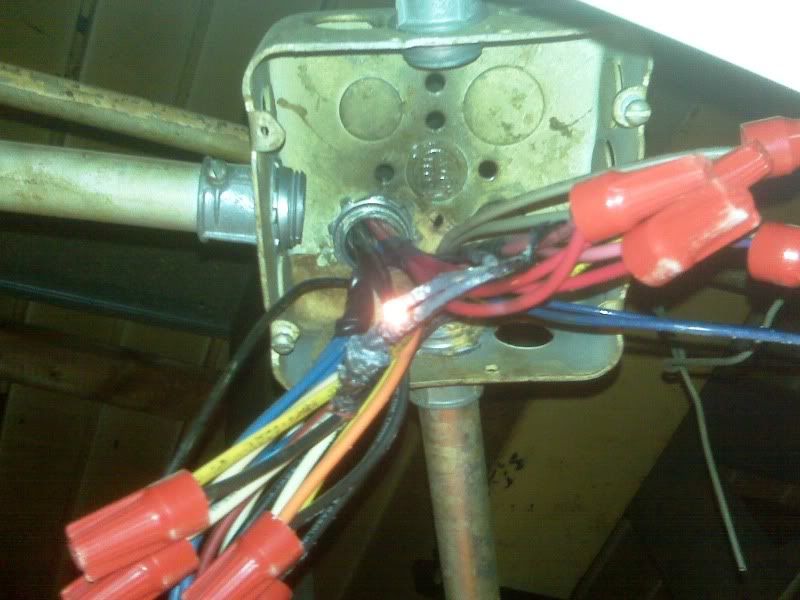Could someone please explain why the problem seems to always show up on the neutral side and not the hot?
Never knew there was a difference.
Could someone please explain why the problem seems to always show up on the neutral side and not the hot?
Such knowledge is forbidden.Could someone please explain why the problem seems to always show up on the neutral side and not the hot?
Could someone please explain why the problem seems to always show up on the neutral side and not the hot?
.............Bottom line they are not safe and probably the cuase of morer fires, maybe even deaths due to fire than we might know of.
You're right as usual Bob. I wasn't thinking "out of the box" when I made that statement. I was just trying to make a point. I hate this stupid wiring method so much that words seem to fly out of my mouth before I think. Come to think of it, I'd make a great politician.The NEC does not allow us to use the screw terminals for MWBC neutral feed through either.
Stabins should be outlawed. How much time do you really save by using them? That being said, would you use them if you were wiring up your own house?
I know, here comes the comments from all the buisness owners,"its my money we're talking about,your not the one whos buying the material." I've seen an intance where my brother in law called me to come look at a plug that caught on fire due to the use of a stabin. Thank god it did'nt happen when he, his wife and three children were sleeping.
Bottom line they are not safe and probably the cuase of morer fires, maybe even deaths due to fire than we might know of.

words seem to fly out of my mouth before I think.
Come to think of it, I'd make a great politician.
And go to what ? Split bolt bugs ?OK, here is a picture of a possible fire starting due to a wirenut, should we also ban wirenuts?
Why back-stabs fail and Wagos do not is a mystery to me. It suggests that the issue is not one of method as much as the quality of manufacture.
OK, here is a picture of a possible fire starting due to a wirenut, should we also ban wirenuts?
If you really feel that way, submit a proposal to the NFPA, along with your documentation.
OK, here is a picture of a possible fire starting due to a wirenut, should we also ban wirenuts?

That falls into the same category as jumbo shrimp and military intelligence.... I'd make a great politician.
Hmmm. Politicians and backstabbing in the same thread.I am in favor of ban on back stabbing if for no other reason than to end these threads.
OK, here is a picture of a possible fire starting due to a wirenut, should we also ban wirenuts?


